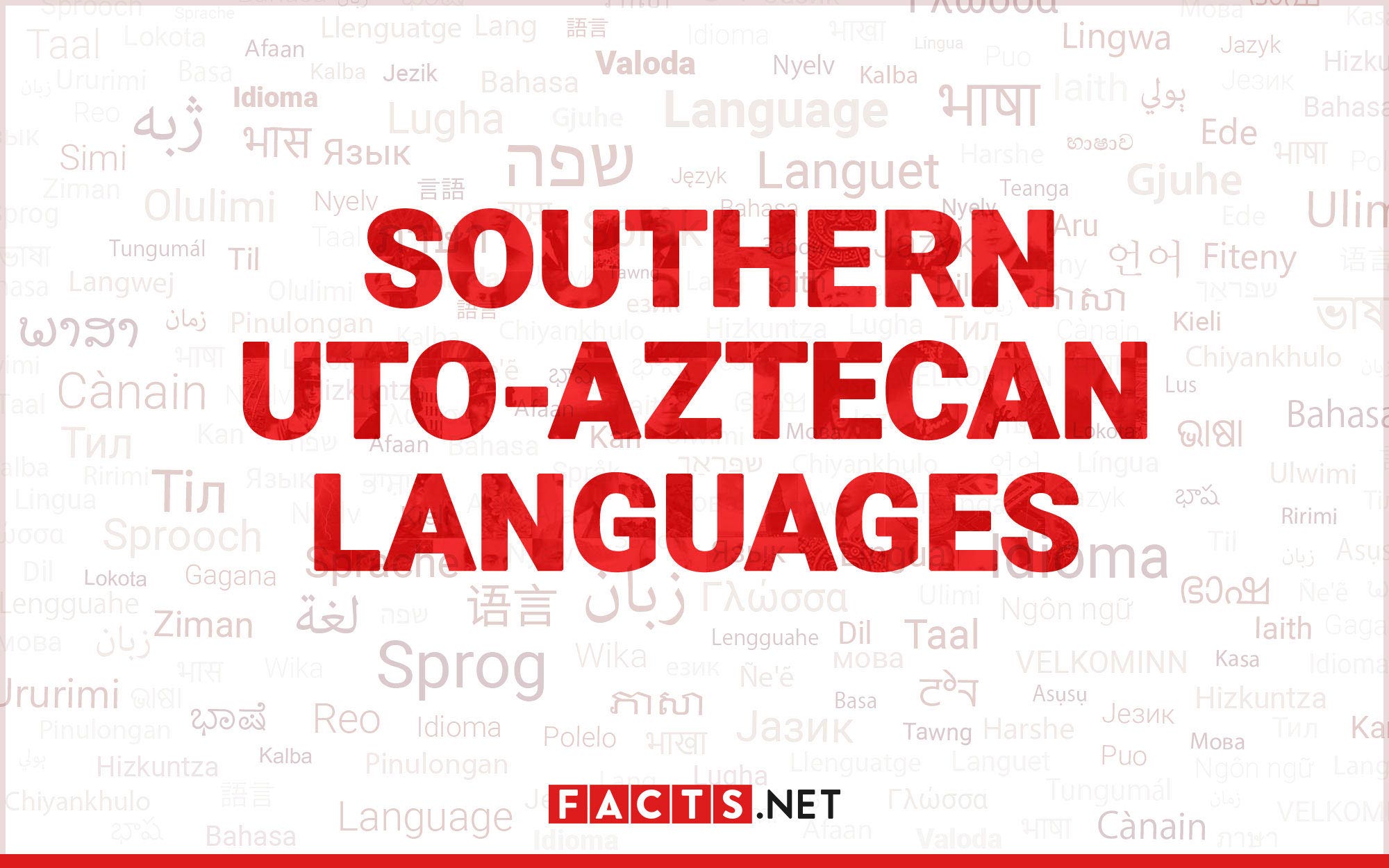
The Southern Uto-Aztecan languages are a fascinating group of languages spoken by various indigenous communities in North America. From the Sonoran Desert to the mountains of central Mexico, these languages have a rich history and unique characteristics that distinguish them from other language families. In this article, we will explore 14 astonishing facts about Southern Uto-Aztecan languages, shedding light on their diversity, linguistic features, and cultural significance. From their close relationship to the Aztec civilization to their influence on modern languages, Southern Uto-Aztecan languages are a testament to the rich tapestry of linguistic heritage in the Americas. So, let’s delve into the intriguing world of these languages and unravel some captivating facts that will leave you amazed.
Key Takeaways:
- Southern Uto-Aztecan languages have a rich history dating back thousands of years and are spoken by indigenous peoples in the southwestern US and parts of Mexico, showcasing incredible linguistic diversity.
- Many Southern Uto-Aztecan languages are endangered, but efforts are underway to revitalize and preserve them, offering insights into ancient cultures and their unique grammatical structures and vocabulary.
Southern Uto-Aztecan languages have a rich history.
With a lineage dating back thousands of years, these languages have been spoken by indigenous peoples across the southwestern United States and parts of Mexico.
There are over 30 different Southern Uto-Aztecan languages.
From Hopi to Nahuatl, these diverse languages showcase the incredible linguistic diversity within the Southern Uto-Aztecan language family.
Some Southern Uto-Aztecan languages are endangered.
Due to various factors such as cultural assimilation and the dominance of other languages, several Southern Uto-Aztecan languages are at risk of disappearing.
Many Southern Uto-Aztecan languages utilize unique grammatical structures.
From polysynthetic grammar to verb-subject-object word order, these languages showcase fascinating linguistic features that set them apart.
The Southern Uto-Aztecan language family has influenced other languages.
Words and phrases from Southern Uto-Aztecan languages have made their way into English and Spanish, among other languages, adding to their rich linguistic heritage.
Navajo is one of the most well-known Southern Uto-Aztecan languages.
Spoken primarily in the southwestern United States, Navajo boasts a complex grammar and is known for its use of tones and intricate verb conjugation patterns.
Yucatec Maya is another prominent Southern Uto-Aztecan language.
Spoken in the Yucatan Peninsula of Mexico, Yucatec Maya has a large number of speakers and is recognized as an official language in Mexico.
Some Southern Uto-Aztecan languages have been written using unique scripts.
For example, the Huichol language of Mexico traditionally used a pictographic script known as the Wixárika script.
Language revitalization efforts are underway for many Southern Uto-Aztecan languages.
In order to preserve and revitalize these endangered languages, various organizations and communities are working to promote language learning and cultural preservation.
The vocabulary of Southern Uto-Aztecan languages often reflects the natural environment.
Words related to plants, animals, and geographical features play a significant role in the lexicon of these languages.
Some Southern Uto-Aztecan languages have ceremonial or sacred uses.
In certain indigenous communities, these languages are used exclusively for religious rituals and ceremonies, emphasizing their cultural and spiritual significance.
Southern Uto-Aztecan languages have complex systems for indicating possession.
These languages often employ possessive prefixes or suffixes to indicate ownership or kinship relationships.
The geographic distribution of Southern Uto-Aztecan languages is diverse.
From the high mountains of the Southwest to the arid deserts and lush rainforests of Mexico, these languages have adapted to a wide range of environments.
Southern Uto-Aztecan languages provide insights into ancient cultures.
The study of these languages allows us to understand the beliefs, traditions, and social structures of the indigenous people who have spoken them for centuries.
Conclusion
In conclusion, Southern Uto-Aztecan languages are a fascinating linguistic family with a rich history and unique features. From their distribution across the American Southwest and Mexico to their intricate grammar and distinct phonetics, these languages offer a deep insight into the diverse cultures that have shaped this region. The 14 astonishing facts about Southern Uto-Aztecan languages highlighted in this article demonstrate the complexity and beauty of these languages, as well as their contributions to our understanding of human communication. Whether you are a language enthusiast or simply curious about the world’s linguistic diversity, exploring the Southern Uto-Aztecan languages will undoubtedly be a rewarding and eye-opening experience.
FAQs
1. How many languages are in the Southern Uto-Aztecan language family?
There are approximately 13 languages in the Southern Uto-Aztecan language family, including Nahuatl, Tarahumara, Opata, Pima, and Yaqui.
2. Where are Southern Uto-Aztecan languages spoken?
Southern Uto-Aztecan languages are primarily spoken in the American Southwest and parts of Mexico.
3. Are Southern Uto-Aztecan languages endangered?
Many Southern Uto-Aztecan languages are indeed endangered, with only a few thousand speakers remaining for some languages.
4. Are Southern Uto-Aztecan languages related to other language families?
Yes, Southern Uto-Aztecan languages are part of the larger Uto-Aztecan language family, which includes various languages spoken across the western United States and Mexico.
5. What are the unique features of Southern Uto-Aztecan languages?
Southern Uto-Aztecan languages have complex verb morphology, including extensive use of prefixes, suffixes, and infixes. They also exhibit a system of tonal distinctions.
Was this page helpful?
Our commitment to delivering trustworthy and engaging content is at the heart of what we do. Each fact on our site is contributed by real users like you, bringing a wealth of diverse insights and information. To ensure the highest standards of accuracy and reliability, our dedicated editors meticulously review each submission. This process guarantees that the facts we share are not only fascinating but also credible. Trust in our commitment to quality and authenticity as you explore and learn with us.
